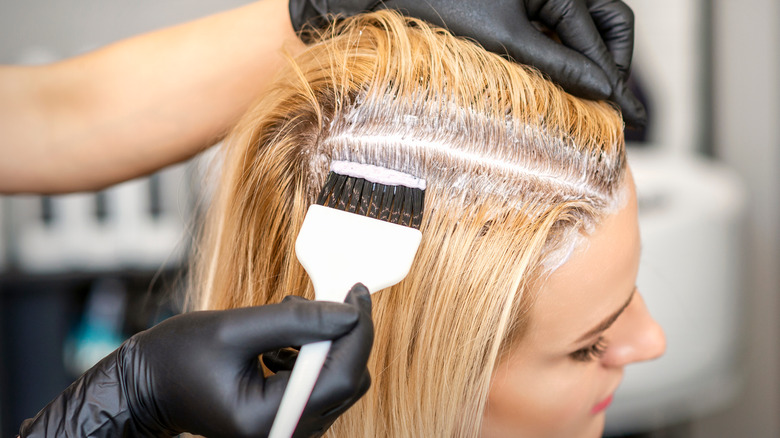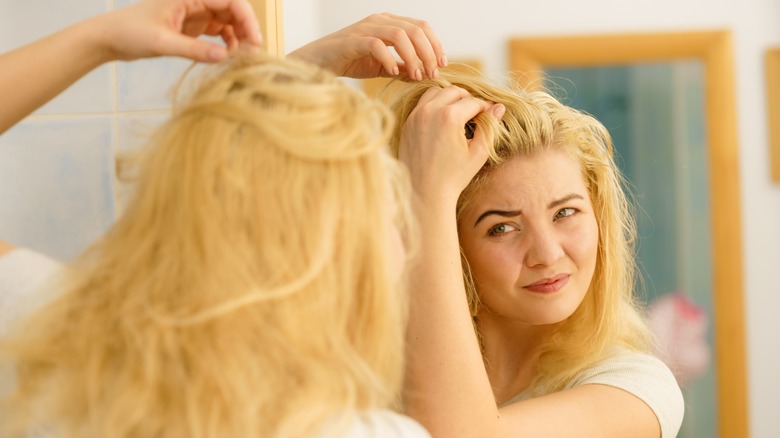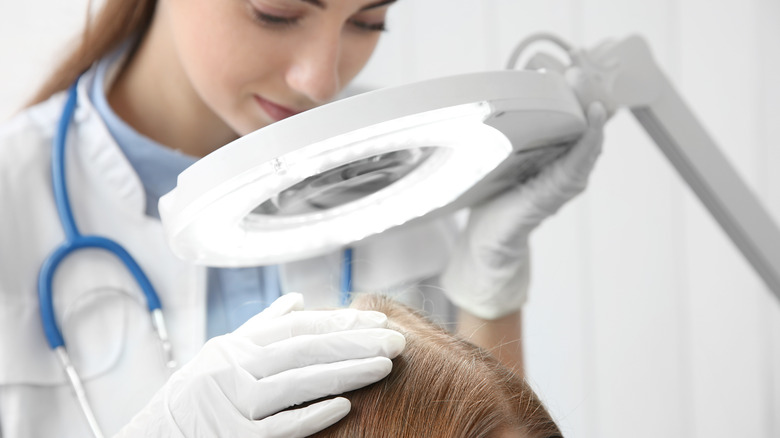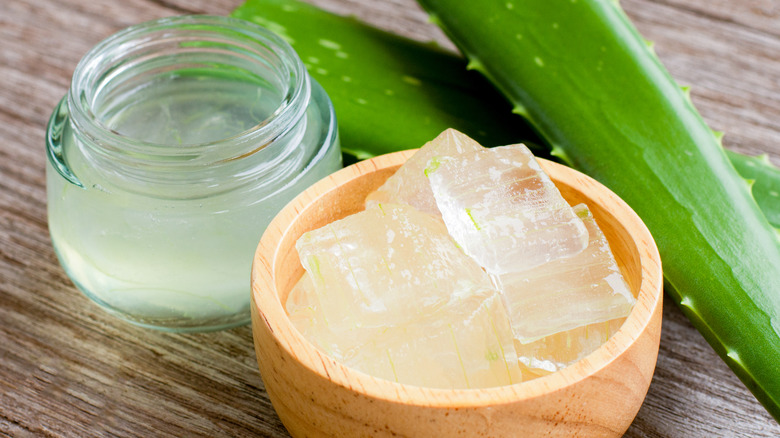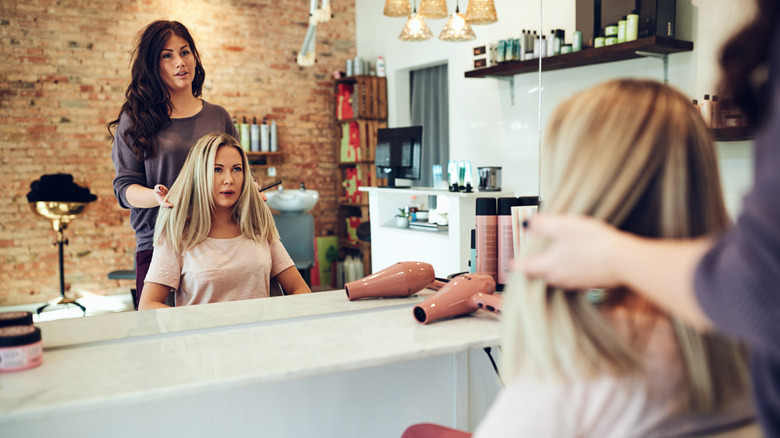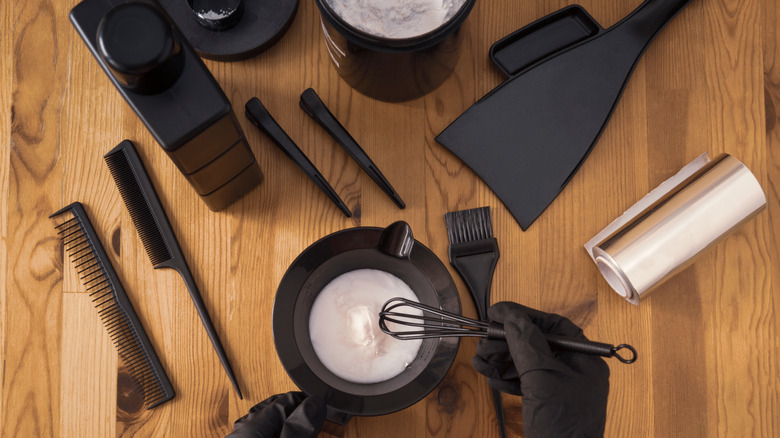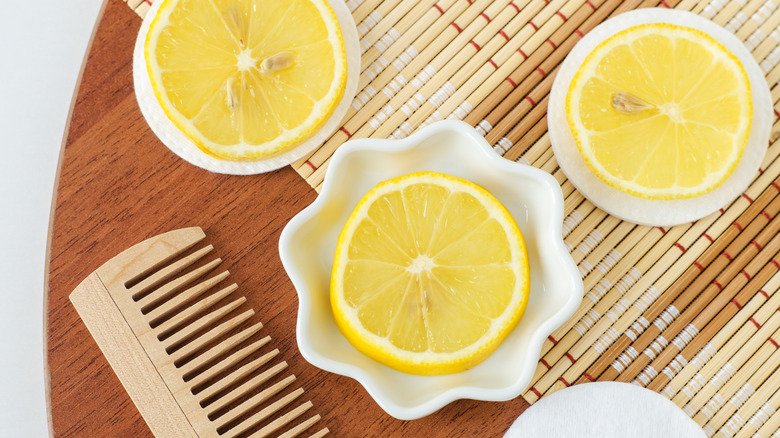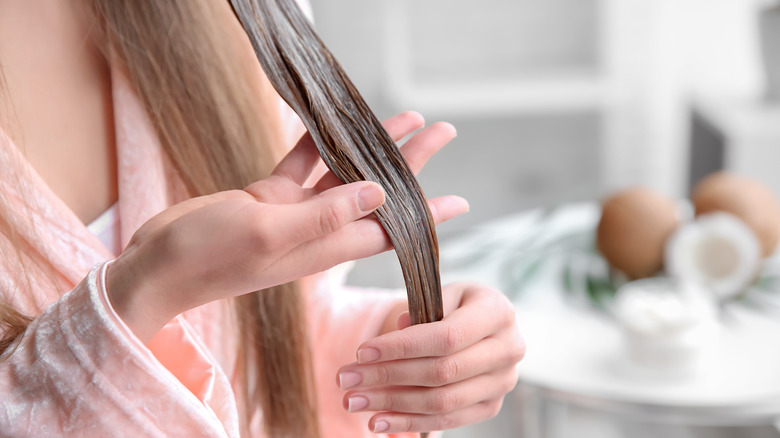Blond Is Beautiful, But Bleach Can Burn. Here's How To Prevent And Treat It
Everyone loves the idea of playing the role of a blond bombshell, and some even go to the extent of dyeing their hair. However, anyone who has ever lightened their natural hair color can tell you that it's no easy task. Additionally, the chemicals necessary to achieve the blond color you desire can wreak havoc on your hair.
Bleach works by removing the pigment from the shafts of your hair. This process is called oxidation. However, this lightening method raises the outer cuticles of your hair, which can result in a loss of moisture. If you bleach your hair too often, you run the risk of drying it out and causing serious damage.
Aside from what may happen to your hair, your scalp might also suffer from a bleaching process gone wrong. You may even find your scalp burned as a result of the chemicals. Here is what you should know about these types of burns.
What to do when on-scalp or off-scalp bleaching goes awry
Many hairdressers who work with dye and bleach know about on-scalp and off-scalp bleaching — two different processes used to achieve different results. On-scalp bleaching is when the hairdresser uses bleach close to the scalp. People who undergo this process typically do so to touch up their roots, and it's not uncommon for the bleach to come into contact with the scalp. However, the chemicals that are used are usually less intense to reduce the risk of a burn. On the other hand, off-scalp bleaching usually does not impact the scalp because the bleach is primarily applied to the hair (such as during a highlighting session). Off-scalp bleach is also often stronger to speed up the lightening process.
The bottom line, however, is that bleaching solutions contain chemicals that can cause burns. Even the most experienced hair stylist might make a mistake, leaving you with painful aftereffects. If you notice redness or pain after bleaching, the product should be removed from your hair and scalp immediately. Continue rinsing your scalp under cool water for at least 10 minutes, and avoid scratching or rubbing the area.
How a chemical burn from bleach is treated
After you've experienced a scalp burn from bleach, it's important to treat the impacted area as you would treat any other type of chemical burn. This means keeping the wound clean and not touching your scalp while it's healing. If you feel any pain, you might want to try a cool compress to reduce swelling, as well as an over-the-counter pain reliever.
However, some chemical burns are worse than others and may require professional medical care. A deep burn, for example, should be addressed by a doctor. A large burn (greater than 3 inches) should also be medically treated. If you think that your bleach burn is severe, do not hesitate to seek emergency medical help. This includes if you notice that your burn is not improving over time. Skin grafting may be necessary to help repair the area of the scalp that has been damaged. A doctor might also recommend a corticosteroid or antibiotics to relieve symptoms, per Healthline.
What to expect while recovering from a bleach burn
Once you experience a chemical burn from a product like hair bleach, it takes some time for the skin to heal. WebMD notes that it's not uncommon for a burn to take up to two weeks to fully heal. And that's assuming you don't develop complications like an infection.
While your scalp burn is healing, you may notice blistering. It's important to leave the blisters alone. If they pop, clean the area, but do not continue touching it. You might also want to use an over-the-counter antibacterial ointment to prevent your burn from becoming infected.
During the healing process, you may want to try applying aloe vera to soothe the burn and any itchiness that comes with it. However, it's important to talk to your doctor about your wound before using any products directly on your scalp. A medical professional can provide you with the most beneficial information for a smooth, speedy recovery.
The easiest preventative measure you can take
Whether you were burned by bleach at the salon or at home while lightening your hair, it's never a fun experience. That being said, there are some ways you can minimize the odds of having to recover from a burn.
The most obvious preventative measure is to work with a hairstylist who has extensive experience with bleach and hair dye, per the Baylor College of Medicine. Dr. Nneka Okafor, assistant professor of family and community medicine at Baylor, notes that having a consultation with your hairdresser before your coloring appointment can be beneficial. "The scalp is an extension of your facial skin, so it is as sensitive as any other part of your skin," Dr. Okafor notes. "If you are highly sensitive to various other products, then you should be more alert and aware." At the salon, your stylist can perform a test to ensure you will not experience any adverse reactions during your appointment. Knowing your sensitivities can also help you avoid scalp irritation in the future.
How to safely use bleach on your hair at home
If you are a do-it-yourself kind of person and prefer to color your own hair, there are steps you can take to ensure that you don't accidentally burn yourself while working with bleach — even if you need to use it near your scalp. Healthline recommends reading the product directions carefully before beginning and making note of any warnings. This is especially important if you're already aware of your skin sensitivities.
Next, be sure to wear gloves while preparing and applying the product to your hair and when rinsing it. Finally, make sure you're watching the clock once the bleach has been applied to your tresses. Leaving the chemicals on for too long can potentially reduce your hair's ability to retain moisture. In turn, this can cause damage and lead to breakage. It's also possible to lose keratin, which may alter the structure of your locks and make them more challenging to style.
Using alternative methods to go blond
If you're having trouble finding a professional hairstylist with the credentials to lighten your hair, or you're simply on the fence about chemicals, don't rule out alternatives to bleach. One option you may already have at home is lemon juice. Adding it to your tresses and then basking in the sunlight can give your hair a natural, lighter appearance. "Lemon juice can lighten your hair when activated by the sun," hairstylist Anita Sun tells the IPSY. "Lemon juice opens your cuticle and lifts color.
Another option is a solution of baking soda and hydrogen peroxide. The two come together to form a paste, which can then be applied liberally throughout your locks. "It's a bit easier to control during the application process because of its consistency," Sun says. "If you wanted it to only work on just the ends or in foils like professional highlights, it could work."
Keep in mind that many of these alternatives involving at-home ingredients often only lighten your hair so much. If you're working with brunette or black hair, you might not see dramatic results.
Tips for keeping your bleached hair healthy
Once you've used bleach to achieve the perfect shade of blond, there are steps you can take to keep your tresses as healthy as possible. After undergoing any type of chemical processing, don't hesitate to ask your hairdresser for advice on how to maintain your locks at home. An expert can give you the best tips for ensuring your hair always looks its best.
Don't forget that keeping your hair hydrated is essential after applying bleach. Style Bar notes that using a hair mask once a week can help you keep your tresses healthy. Additionally, do your best to stay away from styling tools that use heat. Blow dryers and straightening irons, for example, can dry out bleached hair.
Finally, keep in mind that you might need to alter your shampooing routine. Washing your hair too frequently can remove beneficial natural oils. By taking some of these tips into consideration, you can rock your blond hair and rest assured that you're keeping it healthy.
